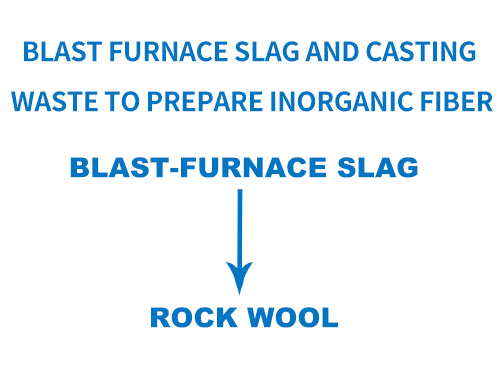INFORMATION DETAILS
What are the common problems with exterior wall insulation rock wool boards?
Author:Dongli Time:2024-01-17 14:05:32 Click:137
Rock wool board is a wall veneer material that integrates the functions of exterior wall insulation,thermal insulation,waterproofing,and finishing.It is a material that meets the current energy-saving requirements of housing buildings and improves the insulation level of industrial and civil building exterior walls.It is also a good addition to existing As a material for energy-saving renovation of buildings,two types of rock wool boards are currently widely used in the market:bonded EPS insulation boards and polystyrene boards.No matter what material it is,there will be some minor problems more or less.Let me tell you what are the common problems with exterior wall insulation rock wool boards?Let’s take a look.
1.Reasons for the falling off of the rock wool board insulation layer
1.Basic structural factors
The exterior wall of the frame structure is prone to damage to the insulation layer due to deformation of the masonry at the joints between the concrete beams and columns and the masonry.Scaffolding openings and other openings are not solidly built,causing partial base layers of the insulation layer to be weak and damaged.The decorative components of the exterior wall are not firmly fixed or displaced,causing a push-pull effect,causing the insulation layer to partially hollow out,causing cracks and then water seeping for a long time,eventually causing the insulation layer to fall off;
2.Improper anti-stress measures
The surface load of the insulation board is too large,or the negative wind pressure resistance measures are unreasonable.For example,in coastal areas or high-rise building exterior walls using non-nail bonding methods,it is easy for the insulation board to be damaged by wind pressure and hollow out;
3.Improper handling of wall interface
Except for clay brick walls,all other walls should be treated with interface mortar before applying slurry insulation material.Otherwise,it is easy to cause the insulation layer to hollow directly or the interface treatment material to fail,resulting in hollowing of the interface layer and the main wall,and jointly forming a void in the insulation layer.drum.The surface of the insulation board also needs to be treated with interface mortar,otherwise it will cause local hollowing of the insulation layer.
2.Reasons for cracking of rock wool board surface layer
1.Material factors
The density of the insulation board for exterior wall insulation should be 18~22kg/m3.Some construction units will use inferior insulation boards below 18kg/m3,which are not dense enough and can easily lead to cracking of the plastering mortar layer;the natural shrinkage time of the insulation board is In the natural environment for up to 60 days,due to factors such as capital turnover and cost control of production companies,insulation boards that have been aged for less than seven days have been put on the wall.The result is that the insulation boards continue to shrink after being put on the wall,adhere and then insulate.The plaster mortar layer on the board was pulled apart;
2.Construction technology
The surface of the base layer is too flat,and the use of adhesive thickness,multi-layer boards,surface grinding and leveling and other adjustment methods will lead to defects in the quality of the insulation;dust,particles and other substances on the surface of the base layer that hinder the adhesion are not treated at the interface;the bonding of the insulation board The area is too small,does not meet the specifications,and does not meet the quality requirements of the bonding area;when the rice surface mortar layer is constructed under exposure to the sun or high temperature,the surface layer loses water too quickly,resulting in cracks;
3.Temperature difference changes
The thermal conductivity coefficients of the two layers of expanded polystyrene board and anti-crack mortar are different.The thermal conductivity coefficient of expanded polystyrene board is 0.042W/(m·K),and the thermal conductivity coefficient of anti-crack mortar is 0.93W/(m·K).The thermal conductivity differs by a factor of 22.When the sun shines directly on the surface of the plastering mortar in summer,the surface temperature of the plastering mortar can reach 50~70℃.In case of sudden rainfall,the temperature of the mortar surface will drop to about 15℃,and the temperature difference can reach 35~55℃.This temperature difference,the difference in day and night temperatures,and the influence of seasonal temperatures lead to large deformation differences in the plastering mortar layer and are prone to cracks.
3.Reasons for indoor condensation on rock wool boards
1.The node design of the window is unreasonable
In energy-saving design,there is only one principle for the design position of windows,which is to set different positions according to different forms of thermal insulation.When using external insulation,it should be close to the outside of the wall.Try to connect the insulation layer and the window as a whole to reduce the insulation breakpoints between the insulation layer and the window and avoid the occurrence of thermal bridges.Some designers ignore the impact of heat transfer from external windows on heat consumption indicators in their designs,and do not adopt thermal insulation design treatments for the windows around the external window openings.This results in condensation indoors;
2.Formation of hot and cold bridge
The unreasonable design of thermal insulation breakpoints leads to the formation of thermal bridge effects around window openings.The indoor humidity dead spots should be improved,good ventilation conditions should be maintained,and thermal bridges should be fundamentally blocked;
3.Unreasonable waterproof design
In the design of the window,the water dripping treatment at the upper opening of the window and the waterproof design treatment at the lower opening of the window are not considered.Water can easily enter the interior of the insulation system from the connection between the insulation layer and the window root,thus causing harm to the external insulation system.
 CONTACT
CONTACT
—— Tel:+86-13930107143
—— Contacts:Mr Wang
—— Add:Wei San Road South, Hope New Area, Mengcun Hui Autonomous County, Cangzhou City, Hebei Province






